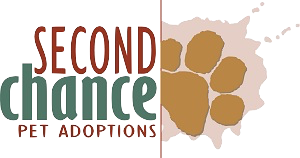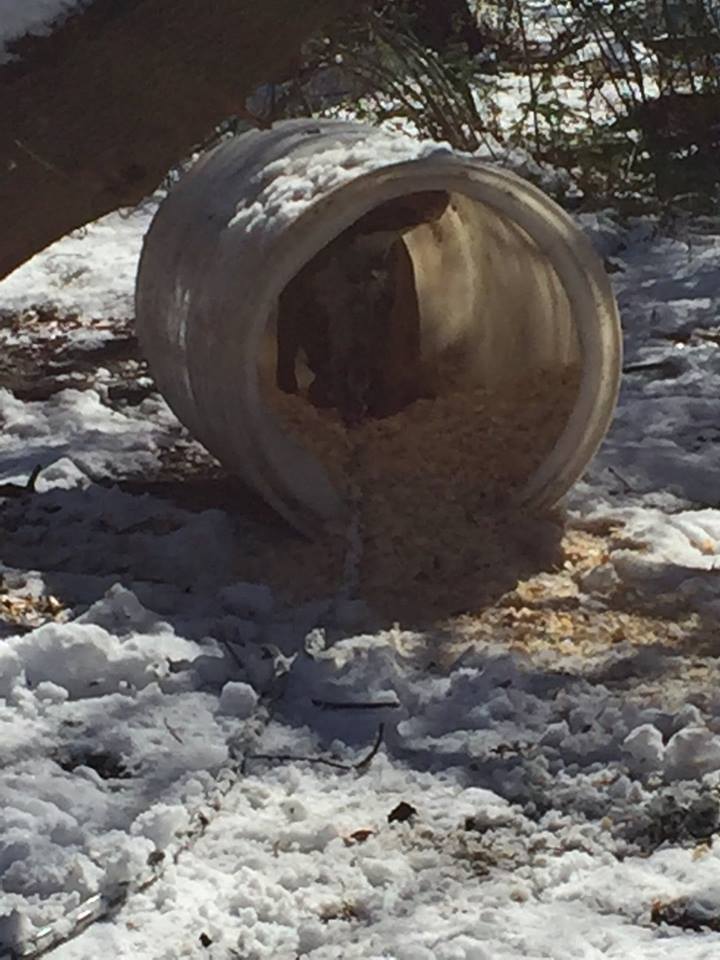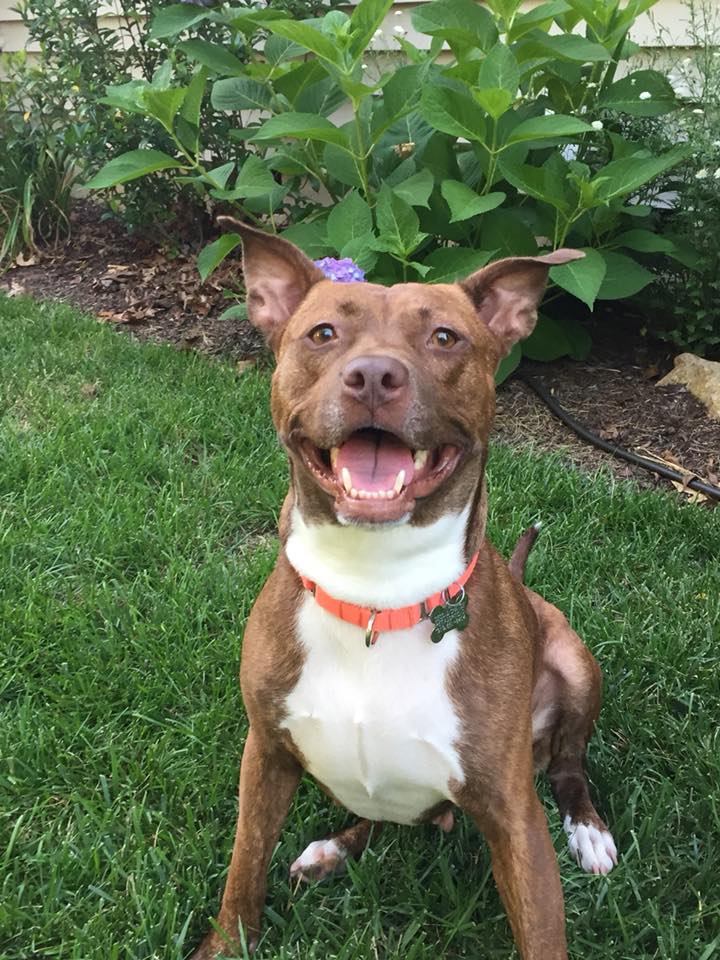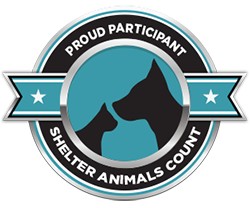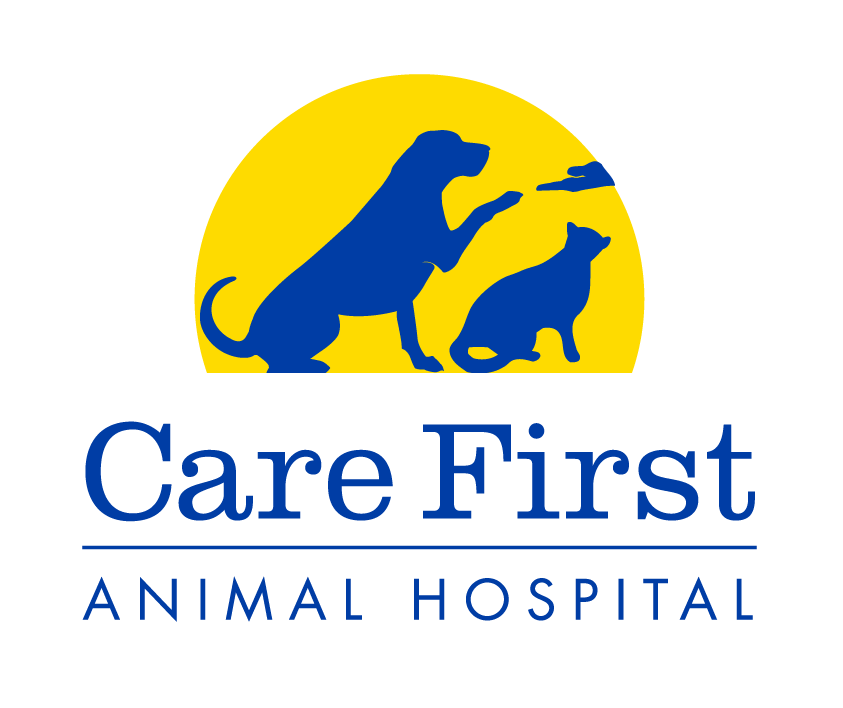Hope’s Big Move: When “Going to Live on a Farm” is a Happy Ending
Hope, as she was found, chained up and without shelter or fresh water.
Foster care may well have been the first time Hope lived inside.
Back in January, a good Samaritan was helping a run-down neighborhood clean up some abandoned lots and houses in Wake Forest. At one deserted house, she saw several empty bags of dog food laying around. Curious, she walked back behind the house and found a dog chained up to a tree. The dog had an overturned empty barrel for shelter, a planter with kibble that had been overturned, and no source of fresh water.
This woman called Animal Control, but as it was MLK Day, they couldn’t come out until the following day. When they did, they told this woman that they had checked on this dog in the past–2 years prior, in fact, and she’d been chained up the whole time between then and now–and they had mandated that the owner provide shelter; that’s when she was given the overturned barrel. Now, she was emaciated, and the owner only came by the abandoned property every few days to feed her. Animal Control said they would contact the owner again about her conditions.
Over the next couple of days, the owner didn’t respond, and a snowstorm hit the area. The woman continued to check on the dog out in the snow and to bother Animal Control about this chained-up dog. Finally, 3 days after their first visit, they took this pup off the chain; she gladly hopped in their truck and went to the county shelter.
At the shelter, the dog was diagnosed with heartworm disease, but she at least began to gain some weight and was a favorite among the staff and volunteers. She lived there for a few months until she started showing some signs of aggression. She was starting to growl at people walking past her kennel. She was removed from the adoption floor and the shelter staff decided she could only leave with a rescue organization. They called the woman who had helped get this dog off the chain and into the shelter, and that woman decided she would foster her for any rescue that would take her.
We were able to take her into our program and treat her heartworm disease, and this woman did indeed foster her. We named her Hope. Unfortunately, things got worse from there. The woman also had a dog of her own, and that dog did not like Hope. The foster parent’s dog picked two fights with Hope, and while Hope didn’t instigate the fights, she also didn’t back down. Twice, the foster mom was bitten (not sure by which dog) while breaking up fights. Additionally, Hope’s foster mom had taken her to an adoption event, and Hope began showing some fear-based aggression, growling at those who walked by. We think she was overwhelmed by the volume of people at the event and that she was feeling protective of her foster family. We decided events weren’t suitable for her and began lining up meet-and-greets in her home instead. At the first meet-and-greet she had with a potential adopter, they brought the whole family to meet her (which wasn’t the plan), and she growled at them and lunged at them. Soon after, anyone who visited the home was likely to be growled at and maybe even lunged at, so Hope had to be put away when visitors came over.
We asked a trainer to help this foster family with Hope and had him come to the house to work with her. He was fortunately wearing thick gloves, so when she bit him, she didn’t break the skin, but it was a hard enough bite to leave his hand throbbing for hours. In the moment, not only did she bite the trainer, but she started to go after her own foster dad. The trainer decided that Hope was too fearful in many situations to control and that she was not an adoptable dog.
At that point, we began considering a range of options. We placed Hope in a new foster home where she could have controlled play with certain dogs. We reached out to trainers and other rescues all over the country and even considered euthanasia. At the end of the day, though, we truly believe that Hope is a good dog that just could not get the socialization she needed living on a chain in an abandoned property; if we could find a place for her with other dogs to play with, without the stress of new people and new situations all the time, she could live a happy, safe life.
We found a dog sanctuary in New York that has a property with several climate-controlled buildings. Here, “going to live on a farm” is a very good thing fog dogs! Dogs have 24/7 access to both the buildings and their land. After an intense period of training and assessment, new dogs are integrated into existing playgroups. They are fed quality food, given all necessary medical care, and allowed to stay for life; some are even rehabilitated to the point of being adoptable. This sanctuary is a wonderful option for a “dog’s dog” like Hope, and they were able to take her into their sanctuary on September 30, 2018. Our dog program manager and one of our dog foster mamas personally drove Hope to New York to deliver her to the sanctuary.
As you might imagine, this sanctuary receives over 1,200 requests per year, and among the dogs they take, many people and rescues who surrender them promise to pay for the dog over the course of their lifespan…but then their pledges fall away. For this reason, the sanctuary needed the full funding for the dog’s life at the time of intake. For Hope, they estimated that she would cost around $7,500 for the rest of her life. (If something unexpected comes up later in life, they will pay for it, but $7,500 is about average.) Second Chance needed to pay the sanctuary $7,500 on September 30.
At Second Chance, as a no-kill rescue organization, we are committed to each one of our animals for life. While our hope for each animal is that they be adopted quickly and that we recoup expenses with adoption fees, we do incur more expenses per animal than we receive from adoption fees. Still, a figure like $7,500 rocks us back on our heels a bit. We had made a commitment to Hope, though, so the question becomes, how do we give Hope this new life–not a second chance, but her third chance–without taking funds away from other animals? We reached out to private donors and collectively, they provided the $7,500 we needed to give Hope a third chance!
